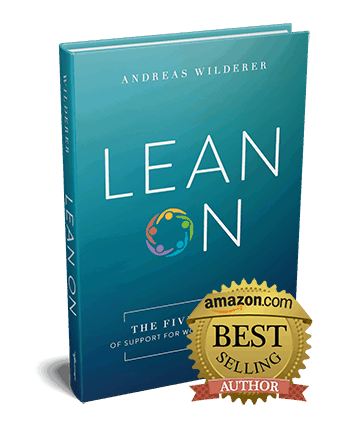As the husband of a successful female executive, I am more than familiar with the social stigmas placed on stay-at-home-dads. In my years of being my children’s primary caregiver, I’ve experienced it many times. I recall one story from my book, Lean On, that might help to shine a bit more perspective on my personal encounters.
Our daughter Viktoria had gone down the slide during recess at school. Not realizing that it was wet, her pants had become soaked through. Hoping to retrieve a dry pair, the school secretary called my wife Mirka’s number. After calling numerous times and leaving several messages, she finally realized she was not available and stopped calling. My wife was on a flight to Europe. I was at home, only five minutes away.
As society sees it, the mother is always the primary caregiver. That said, no one had thought to ask my daughter which parent to call for school emergencies. And, not knowing who was being called, Viktoria did not think to tell the nurse to call me. The school did have my contact information and eventually called me. I was there in five minutes with a pair of clean pants.
Today, it is completely normal for both partners to work outside the home. Of these families, according to a 2017 study conducted by the Center for American Progress, 41% of mothers were either the sole breadwinner or earned more than half the total household income. That figure includes single working mothers and married mothers who out-earn their husbands.
Of those families in which the mother was the primary breadwinner, many men had either gone part-time or chose to stay home and raise the children. In fact, according to a study conducted by the Pew Research Center, the percentage of stay-at-home dads has risen from 4% in 1989 to 7% in 2016 As a result, dads made up 17% of all stay-at-home parents in 2016, up from 10% in 1989. Among millennials (those aged 20 to 35 in 2016), 6% of dads were at home with their kids.
By comparison, 3% of Gen X dads were at home with their kids when they were the same age. Among stay-at-home dads, it’s becoming much more common to be home specifically to care for a family. In 2016, 24% of stay-at-home dads reported that this was the main reason they were at home, up from just 4% in 1989. In comparison, 78% of stay-at-home moms reported this was the main reason they were home, down from 86% in 1989.
Still, the greater society tends to carry on as usual, as if oblivious to the deep social currents that are changing our world. And these attitudes are not always from outside sources. They can be felt in close inner circles as well.
When I decided to give up my full-time career to be a stay-at-home dad, I definitely felt the pressure from friends and family. It may have seemed like good-natured teasing to them, but in truth it cut me to the bone. “Oh, I see you got the better deal here, sleeping late and playing golf and drinking beer all day.” “Oh, I see you’re doing women’s work. You should get a real job and be a real man.”
Ingrained attitudes take years to evolve into acceptance. Our society has a long way to go in dispelling old assumptions about a mother’s or father’s role in the family. Eventually, these attitudes will adjust to meet the new reality. But what would this new reality look like?
According to a recent article published by Pipeline Equity1, the benefits far outweigh the attitudes:
What happens when we normalize being a stay-at-home dad?
First, the U.S. economy gets a boost. We know that if men took on a larger share of work in the home, the U.S economy would be better off. If we allocated labor in a gender-neutral way and people made better use of their time and skills, output per hour would increase by 5.4%. More stay-at-home dads is the smart thing to do.
Second, a father’s different parenting style instills problem-solving abilities in children. Dads tend to parent with a hands-off style, which, over the long-term, results in better self-control in children, less risky behavior and better grades.
Third, increasing a father’s involvement in his children’s lives leads to better outcomes. Dads can provide a special type of care that mothers often do not provide. The value of diversity is important in raising happy, healthy children.
Bottom line: Men run households differently than women and that diversity is good for everyone.
As a supportive husband to a successful female executive, I am very familiar with the societal challenges that come with being a stay-at-home father. In my book, Lean On, I explore the stigma of swapping traditional roles, the prevailing societal attitudes of what a “real” family looks like and how you can make it work for your family.
1. https://www.pipelineequity.com/katicas-voice/stay-at-home-dads-the-norm/


